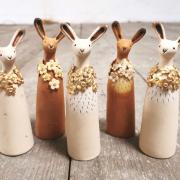This month our columnist looks back on a year in Nature which has offered more plusses than minuses
The year has yet to draw to its final conclusion and, although poised on the brink of the bleak winter months which lie ahead, one can look back with some nostalgia to the golden summer months of June and July, and even the late reminder in September of all that is best in our countryside.
It has, in fact, been a remarkable year of resurgence and hope for so many aspects of wildlife, though that must not blind us to losses, notably amongst bird life. Turtle doves, one of the most attractive of avian visitors to this country, are veering towards the point of extinction and it is now believed that the population has halved every six years and that for 20 turtle doves in 1970 only one exists today.
However, on the winning side, a pair of colourful exotic looking bee-eaters have nested in the Isle of Wight and successfully fledged four young and just as little egrets from the South of France have now colonised much of the south coast, including the Exe estuary, so it is quite possible our milder winters and warm summers will attract not only birds such as bee-eaters but insects rarely seen here.
There have already been several sightings on the south coast of the scarce swallowtail, while extremely rare long-tailed blues this year bred in Kent and Sussex, and the striking moth, the Clifden Nonpareil, with its dramatic blue underwings, and the Rosy Underwing, have all been reported from Dorset, Wiltshire and Sussex. It is possible that these moths may now have established a breeding population in this country.
But for many of us the late summer was enhanced by the dramatic explosion of tortoiseshell butterflies, peacocks, red admirals, commas and painted ladies. My buddleia bushes, in full flower, were a-flutter with all these species, and even a clouded yellow put in an appearance. Only two years ago we were told that tortoiseshells were in severe decline due to a parasitic fly whose eggs, laid on nettles, were eaten by the tortoiseshell caterpillar, then hatched inside the unfortunate creature and killed it. Once again, nature has bounced back, given the benefit of sunshine and an early, luxurious growing season.
It is not all good news, though. Earlier in the year I referred to the spread of polecat-ferrets, especially here in the South West, and in the autumn several gamekeepers told me these animals are appearing in ever increasing numbers. Far larger and stronger than stoats, they can cause carnage in a pen of pheasant poults, and I have little doubt would slaughter poultry if they broke into an outside run. It is now quite likely that all wild polecats are tainted with ferret blood and that the true animal may only exist in one or two remote parts of Wales.
Who knows what weather may befall us through the winter, and though December can be harsh, the following two months are, in my book, the bleakest of the year. Food for birds is scarce in January and February and, if recent trends are anything to go by, it will be rain not snow, we should fear.
An appeal then to households with gardens to maintain bird-feeders with seed, nuts and fat balls throughout the bleak mid-winter. Many of our native garden and woodland birds, particularly song-thrushes, greenfinches, sparrows and starlings to mention only a few, are in severe decline. Any help we can provide by way of food and shelter is essential.
This has indeed been a year of lush growth and warmth, sufficient to help Nature bounce back and revive the fortunes of so many wild creatures. For my part I can only hope you have enjoyed this year’s Country Casebooks and I look forward to bringing you more tales from the countryside in 2015.



























